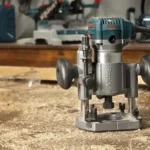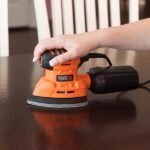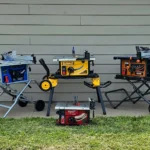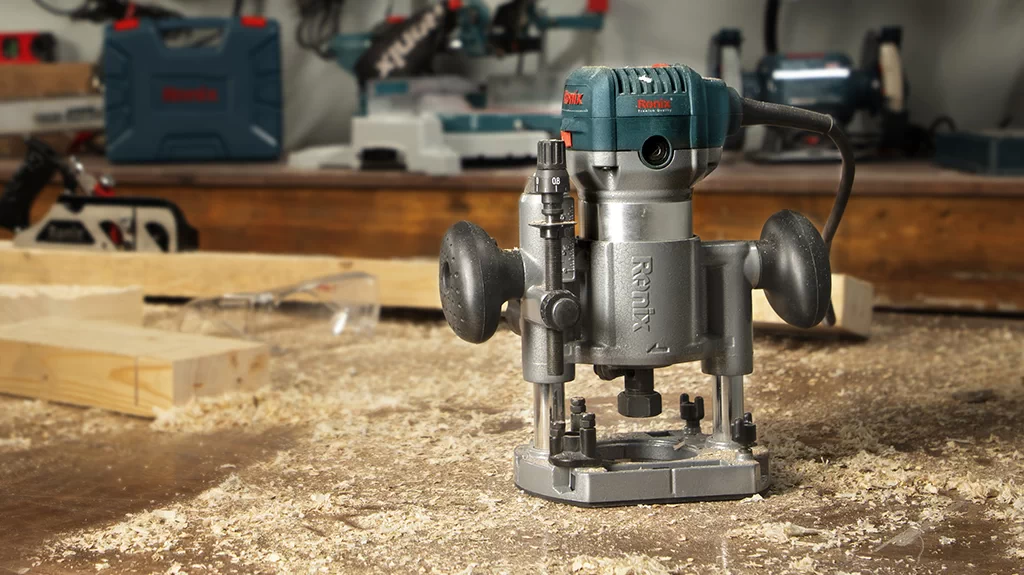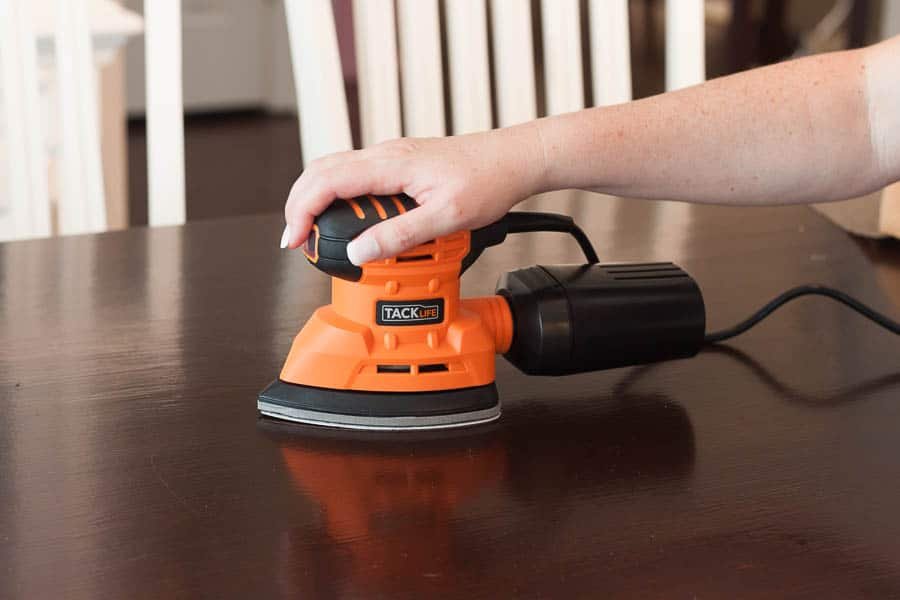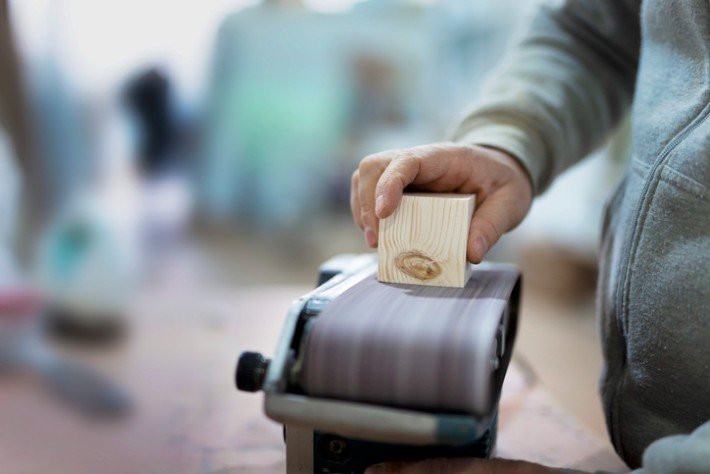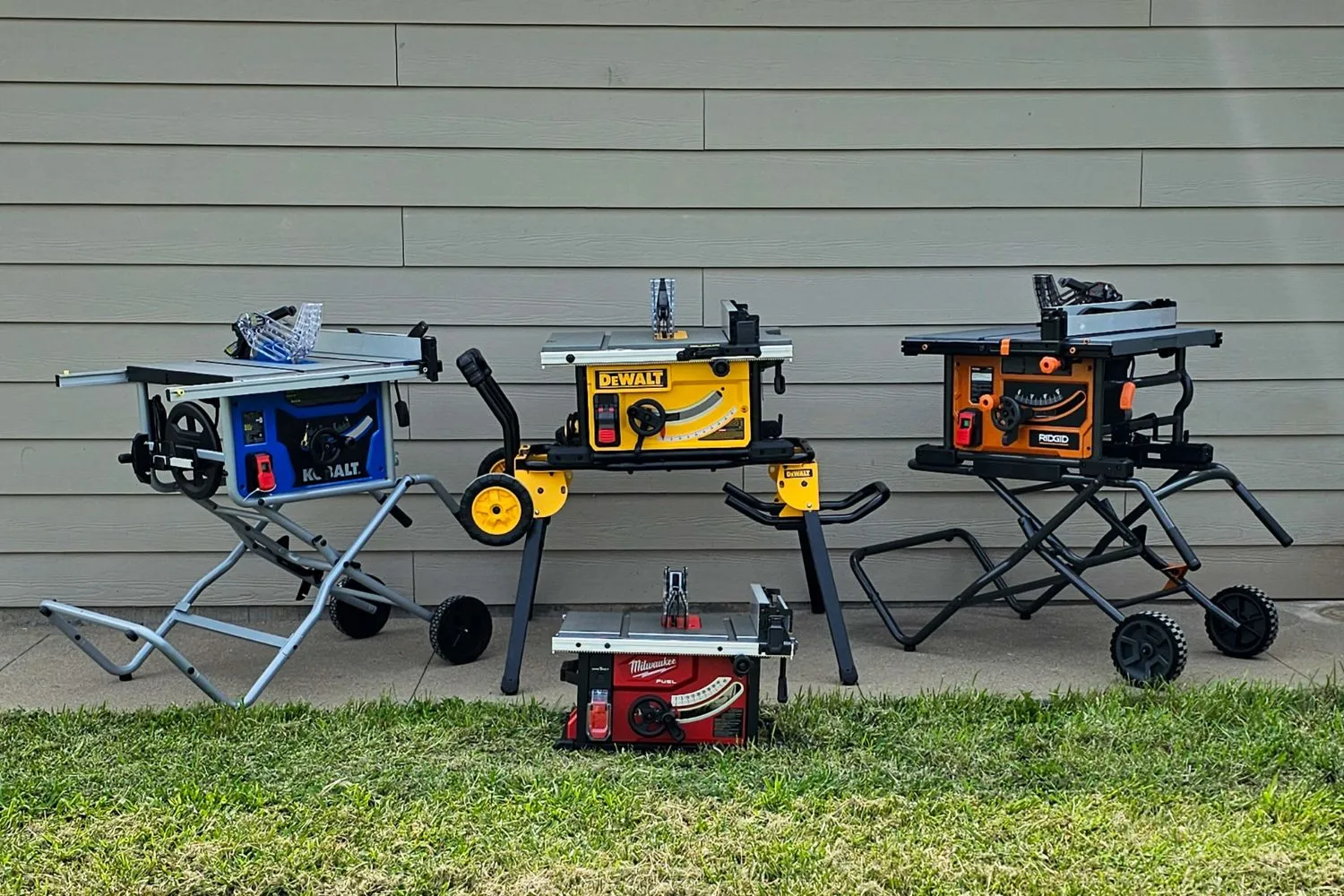Scroll saw blades are essential tools in the realm of woodworking, revered for their precision and versatility. These specialized blades are designed to be used with scroll saws, which are power tools that enable intricate and detailed cutting.
The importance of selecting the best scroll saw blade cannot be overstated, as it directly influences the quality and accuracy of the cuts, ultimately affecting the final outcome of the woodworking project.
A scroll saw operates by rapidly moving its blade up and down, allowing for precise and controlled cutting of various materials.
The unique design of the scroll saw blade, characterized by its small size and fine teeth, helps in executing detailed designs, curves, and intricate patterns that would be challenging with other cutting tools.
The choice of blade is crucial because it determines the smoothness of the cut, the ease of maneuvering the material, and the overall efficiency of the cutting process.
Scroll saw blades come in a variety of types, each tailored to specific materials and cutting needs. These materials range from softwoods and hardwoods to non-wooden materials such as plastics, metals, and composites.
For instance, a fine-toothed blade might be ideal for cutting intricate designs in wood, while a coarser blade may be more suitable for cutting through thicker or harder materials.
The diversity in blade types ensures that woodworkers can find the perfect blade to match their project requirements, whether they are working on delicate marquetry or robust metalwork.
Understanding the purpose and significance of selecting the right scroll saw blade is the first step towards mastering the art of fine woodworking.
By choosing the best scroll saw blade for your specific needs, you can achieve cleaner cuts, reduce material wastage, and enhance the overall quality of your finished projects.
Table of Contents
Types of Scroll Saw Blades
When embarking on a woodworking project, selecting the best scroll saw blade is crucial for achieving precision and efficiency. Several types of scroll saw blades exist, each designed for specific uses and materials. Understanding these varieties will help you choose the right blade for your project.
Firstly, plain-end blades are the most common and versatile type of scroll saw blade. They are held in place by clamps and are suitable for intricate, detailed work. Due to their uniformity, they can be easily swapped out, making them a favorite among hobbyists and professionals alike.
In contrast, pin-end blades feature small pins at both ends, which fit into corresponding holes on the saw. These blades are easier to change compared to plain-end blades but are less suitable for detailed work due to their larger size and limited variety. They are ideal for simpler projects and beginners who prioritize ease of use.
Spiral blades are unique in that they cut in all directions without the need to turn the workpiece. This makes them perfect for cutting intricate patterns and curves, particularly in thin materials. However, their multi-directional cutting capability can compromise control, necessitating a steady hand and experience.
Skip-tooth blades have a gap between each tooth, allowing for faster cutting and improved removal of sawdust. This design reduces heat buildup, making these blades ideal for softwood and plastic. Their efficiency in cutting through materials quickly makes them popular for larger projects.
Double-tooth blades, as the name suggests, feature pairs of teeth separated by a wider gap. These blades offer a smoother finish than skip-tooth blades while maintaining a decent cutting speed. They are perfect for projects requiring a fine finish, such as detailed fretwork.
To help you compare these types of scroll saw blades at a glance, refer to the table below:
| Blade Type | Key Features | Best Use |
|---|---|---|
| Plain-End | Versatile, easy to swap | Intricate, detailed work |
| Pin-End | Easy to change, larger size | Simpler projects, beginners |
| Spiral | Cuts in all directions | Intricate patterns, curves |
| Skip-Tooth | Gap between teeth, fast cutting | Softwood, plastic |
| Double-Tooth | Smoother finish, pairs of teeth | Detailed fretwork |
Factors to Consider When Choosing a Scroll Saw Blade
Choosing the best scroll saw blade involves careful consideration of several critical factors. Each aspect, from blade material to teeth per inch (TPI), has a significant impact on both performance and suitability for various tasks. Understanding these elements is essential for selecting the right blade for your specific project requirements.
The material of the blade is one of the primary considerations. Blades are typically made from high-carbon steel, bi-metal, or tungsten carbide. High-carbon steel blades are flexible and ideal for intricate cuts, but they may dull quickly.
Bi-metal blades combine the flexibility of carbon steel with the durability of high-speed steel, offering a longer lifespan. Tungsten carbide blades are extremely hard and wear-resistant, making them suitable for cutting through tough materials like metal and ceramics.
Another essential factor is the teeth per inch (TPI). The TPI determines the smoothness of the cut and the speed at which the blade cuts. Blades with a higher TPI produce smoother cuts and are perfect for delicate projects, while blades with a lower TPI cut faster and are better suited for thicker materials. Matching the TPI to the material and intricacy of your project ensures optimal results.
Blade width and thickness also play a crucial role in determining the best scroll saw blade. Thinner, narrower blades are ideal for making tight, intricate curves and detailed work. Conversely, wider, thicker blades are more durable and suitable for straight cuts and thicker materials.
Selecting the appropriate width and thickness based on your project requirements can enhance both precision and efficiency.
To summarize, choosing the best scroll saw blade involves evaluating the blade material, TPI, width, and thickness.
Each factor influences the blade’s performance and suitability for different tasks. By understanding these aspects and matching them to your specific project needs, you can achieve the best possible results in your woodworking endeavors.
Top Brands and Manufacturers
When it comes to selecting the best scroll saw blade, the brand and manufacturer play a crucial role in ensuring quality and performance. Several top-tier brands have established themselves as leaders in the industry, known for their innovation, durability, and precision. Let’s explore some of these prominent manufacturers.
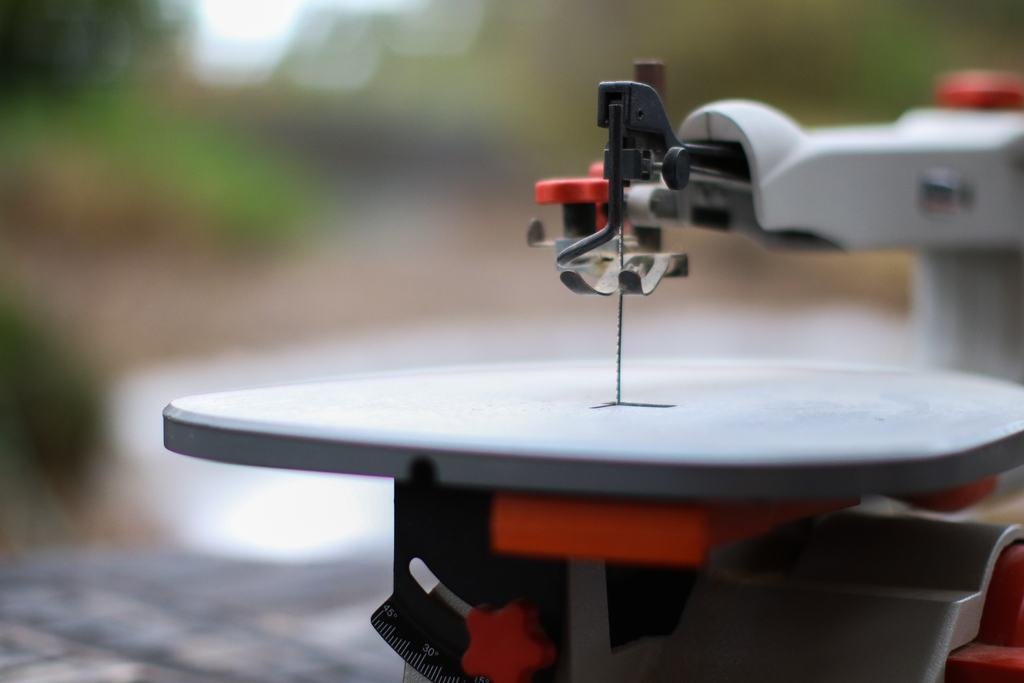
Olson Saw Company: Olson is a well-respected name in the scroll saw community, offering a wide variety of blades suited for different materials and projects. Olson blades are known for their sharpness and longevity, which are critical for intricate scroll saw work.
Their premium line includes the PGT (Precision Ground Tooth) series, praised for its ultra-smooth finish. Professional woodworkers often commend Olson for their consistency and reliability.
Pegas: Pegas, a Swiss manufacturer, is renowned for its high-quality scroll saw blades. They utilize advanced manufacturing techniques to produce blades that are extremely precise and durable. Their range includes skip tooth, double-tooth, and modified geometry blades, among others.
Pegas blades are often recommended by experts for their exceptional performance in both hardwood and softwood applications.
Flying Dutchman: Known for their superior craftsmanship, Flying Dutchman blades are made in Germany and are a favorite among professional crafters and hobbyists alike. These blades are praised for their smooth cuts and minimal vibration.
The UR (Ultra Reverse) series, in particular, is well-regarded for its ability to minimize splintering on the underside of the cut, a common issue with less advanced blades.
DeWalt: As a household name in power tools, DeWalt also offers a range of scroll saw blades that live up to their reputation for quality. DeWalt blades are designed to handle tough materials and maintain their edge over extended use.
Many users appreciate the brand’s commitment to innovation and durability, making their blades a reliable choice for various projects.
Incorporating blades from these leading brands ensures that users are equipped with the best tools for precision cutting. Testimonials from professionals in the field often highlight the importance of investing in high-quality blades to achieve optimal results.
By choosing the best scroll saw blade from a reputable manufacturer, one can significantly enhance the efficiency and quality of their scroll saw projects.
Best Scroll Saw Blades for Various Projects
Choosing the best scroll saw blade for your project is crucial to achieving the desired results. Whether you’re working on intricate patterns, cutting thick wood, tackling metalwork, or working with plastics, selecting the appropriate blade can make all the difference.
Intricate Patterns
For intricate patterns, fine-tooth blades such as the Olson Saw FR49400 Skip Tooth Scroll Saw Blade are highly recommended. These blades have smaller teeth with less spacing, which allows for precise and delicate cuts. Ideal for marquetry, intarsia, and detailed fretwork, these blades can handle tight curves and complex designs with ease, ensuring clean and accurate cuts.
Thick Wood Cutting
When cutting thicker wood, such as for furniture making or larger woodworking projects, a heavy-duty blade like the Flying Dutchman Ultra Reverse Scroll Saw Blade is ideal. These blades are designed with reverse teeth that reduce splintering on the bottom of the wood, ensuring a smooth finish.
They can efficiently cut through wood up to 2 inches thick, providing durability and strength for demanding tasks.
Metalwork
Metalworking projects require a different approach, and the Bosch SS5-20 Metal Cutting Scroll Saw Blade is a top choice. These blades are crafted from high-carbon steel, providing the toughness needed to cut through metals such as aluminum, copper, and brass.
They offer precision and longevity, making them perfect for creating metal jewelry, intricate metal designs, and more robust metal components.
Plastics
For cutting plastics, such as acrylic or polycarbonate, the Pegas Swiss Made Modified Geometry Scroll Saw Blade is highly effective. These blades are engineered to reduce melting and chipping, ensuring clean edges and precise cuts.
They are particularly useful for hobbyists and professionals working on projects like model building, signage, and custom plastic components.
By selecting the best scroll saw blade for your specific project needs, you can enhance both the quality and efficiency of your work. Understanding the unique attributes of each blade type will enable you to achieve optimal results, regardless of the material or complexity of your tasks.
Maintenance and Care of Scroll Saw Blades
Proper maintenance and care of scroll saw blades are crucial for extending their lifespan and ensuring optimal performance. Regular upkeep not only enhances the efficiency of the best scroll saw blade but also contributes to safer and more precise cutting operations. Neglecting maintenance can lead to premature wear, reduced effectiveness, and potential safety hazards.
One of the primary aspects of maintaining your scroll saw blades is keeping them clean. Sawdust, resin, and other debris can accumulate on the blade during use, impairing its cutting ability. To clean your scroll saw blades, use a soft brush or compressed air to remove any debris after each use.
For more thorough cleaning, soak the blades in a solution of warm water and mild detergent, then scrub gently with a soft-bristled brush. Ensure the blades are completely dry before reinserting them into the saw to prevent rust.
Sharpening is another crucial element of scroll saw blade maintenance. While many modern blades are designed to be disposable, some high-quality blades can be resharpened to extend their usability.
Use a fine-grit sharpening stone or a specialized sharpening tool to gently hone the teeth of the blade. Be mindful of maintaining the original tooth geometry to preserve cutting efficiency.
Proper storage is essential to prevent damage to your scroll saw blades. Store blades in a dry, cool place, preferably in a protective case or container to avoid accidental damage or bending. Labeling the blades based on their type and condition can also help in maintaining an organized workspace.
Common mistakes to avoid include using a blade that is not suitable for the material being cut, applying excessive force, and operating the saw at an inappropriate speed. Recognizing when a blade needs to be replaced is also vital; signs such as decreased cutting performance, visible wear, or broken teeth indicate that it’s time for a new blade.
By adhering to these maintenance and care practices, you can ensure that your best scroll saw blade remains effective and reliable, allowing you to achieve precise and efficient cuts in all your projects.
Troubleshooting Common Issues
When working with a scroll saw, users may encounter several common issues that can affect the quality and efficiency of their cuts. One frequent problem is blade breakage, which can be caused by using the incorrect type of blade for the material or applying too much pressure.
To mitigate this, ensure that you are selecting the best scroll saw blade suited for your project and maintain a steady, moderate pressure while cutting.
Another prevalent issue is wandering cuts, where the blade strays from the intended line. This often happens due to improper blade tension or a dull blade. Before starting your work, check that the blade is properly tensioned and replace it if it shows signs of wear.
Additionally, practice guiding the material slowly and steadily through the saw to maintain control.
Difficulty in making tight turns is another challenge users may face. This can occur if the blade is too wide or not appropriate for intricate cuts. Opt for a thinner blade with finer teeth, specifically designed for detailed work, to achieve smoother and more precise turns. Remember to make gradual turns and avoid forcing the blade, as this can lead to breakage.
Frequently Asked Questions (FAQ)
Q: Why does my scroll saw blade keep breaking?
A: Blade breakage can result from incorrect blade selection, excessive pressure, or improper tension. Ensure you are using the best scroll saw blade for your material and maintain moderate pressure while ensuring the blade is correctly tensioned.
Q: How can I prevent my scroll saw blade from wandering?
A: Wandering cuts can be prevented by ensuring the blade is properly tensioned and sharp. Additionally, guide the material slowly and steadily through the saw to keep the blade on the intended path.
Q: What type of blade should I use for tight, intricate cuts?
A: For tight, intricate cuts, choose a thinner blade with finer teeth designed for detailed work. This type of blade will allow for smoother and more precise turns. Make your turns gradually to avoid forcing the blade.
Conclusion and Final Recommendations
In conclusion, selecting the best scroll saw blade is crucial for achieving optimal results in your woodworking projects. The type of blade you choose can significantly impact the quality of your cuts, the precision of intricate patterns, and the overall efficiency of your work.
Throughout this guide, we have explored various aspects of scroll saw blades, including the different types available, their specific uses, and the factors to consider when making your selection.
It is essential to match the scroll saw blade to the material and complexity of your project. For instance, fine-toothed blades are ideal for detailed work on delicate materials, while coarse-toothed blades are better suited for thicker, harder materials.
Additionally, the blade’s thickness and width can affect its performance, with thinner blades providing better maneuverability for intricate cuts and thicker blades offering more stability for straight cuts.
We also discussed the importance of understanding the TPI (teeth per inch) rating, as it directly influences the smoothness and speed of your cuts. Higher TPI blades produce smoother finishes and are perfect for fine details, whereas lower TPI blades cut faster and are suitable for rougher work.
Understanding these nuances will help you make an informed decision tailored to your specific needs.
Our final recommendations emphasize the importance of experimenting with different blades to find the one that best suits your style and project requirements. Always consider the material you are working with, the desired outcome, and the intricacy of the design.
Investing in a variety of high-quality blades will enhance your versatility and ensure you are prepared for any project.
We encourage you to share your experiences and ask questions in the comments section below. Your insights and inquiries will contribute to a richer community discussion and help fellow woodworkers make more informed choices. Happy sawing!
